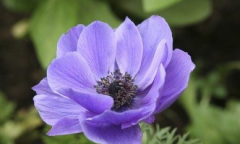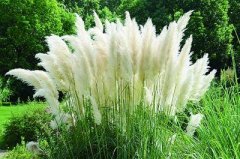What is anemone? Introduction to planting methods and Flower cultivation of Anemone
Tall erect stems and deep leaves are covered with milky flowers, describing the tall anemone. What is anemone? It is a native North American plant with exuberant growth and diffusion characteristics, although not as bad as some relatives of sea anemones. The interesting thing about this plant is its blooming season, from spring to early autumn. Continue to read some tips on how to grow thimbleweed and enjoy the flowers in the garden.
You may find tall thimbleweed wild in the humid, dense grasslands, forest edges, savannas, and other native plant jungles in the central and eastern United States and southern Canada. The name comes from the distinctive densely populated yellow pistil resembling a thimble. This plant is very suitable for the native flower park, and it is easy and pleasant to take care of the tall mountain flowers and plants.
Anemone is a kind of sea anemone. In fact, its plant name is Anemone virginiana. It may be confused with Anemone cylindrica, but A. virginiana has a longer central fruit cluster. Plants can grow 2 to 3 feet (. 61 to. 91 m) tall, with slender, erect stems and leaves, with rounded margin serrulate.
How to plant anemone? Anemones grow in dry to moderately moist soil, in partial shade or plenty of sunlight. It prefers acidic to neutral soils and grows best when the soil contains a lot of organic matter. Once established, the plant is very resistant to drought and cold.
Sea anemones grow rapidly from the seeds or divisions of older plants. If you don't want the plants to be filled at will, then taking care of the tall thimbleweed will need to switch back to the plants in the fall to prevent the seeds from spreading.
It has few disease or pest problems and is hardy in USDA districts 2 to 8. This is a lovely flower, suitable for mottled gardens full of other wild perennials.

- Prev

The growth position of sea anemone varieties is different, how to plant and care for sea anemone tubers.
Sea anemones have low clumps of leaves and colorful flowers. Commonly known as Pulsatilla, these carefree plants are often found in the landscape of many family gardens. There are several types of sea anemones, including those that bloom in spring and autumn
- Next

What does a feather Reed look like? Soil requirements of feather Reed growing area
What is a feather Reed? Feather grass is a tufted ornamental grass with a wide variety of species. It is a deciduous plant, but it is the first family to display leaves in early spring. Feather red plants may grow to 3 to 5 feet tall and produce an initial green in June and slowly.
Related
- A course of planting techniques and methods on how to grow carrots
- How to plant the latest tulips?
- Is it better to pick tea in the morning or in the afternoon? When is the best time for tea to be picked? what is the third or fifth tea?
- Launch Yuanxiao Happy combination Haocha + Tea Yuan healthy Taste
- Penghu Tourism "Fireworks 20 Parade with You"
- 2022 West Lake Happiness holds "Digital Revitalization Voucher" and draws iphone13 and laptop.
- Banqiao Fuzhou social houses are designed to change start-up combined with police elimination to create a safe and livable environment
- The convenient measure of "mechanical weeding" in Xinbei has been abused and the Agriculture Bureau has imposed heavy penalties on the illegal land consolidation.
- Changgeng University Joins Hands with Four Memory Factories to Rescue Memory Talent Shortage
- The list of Taiwan's top 100 MVP managers is listed by the Director-General of the Farmers' Association of Sanxia District.

